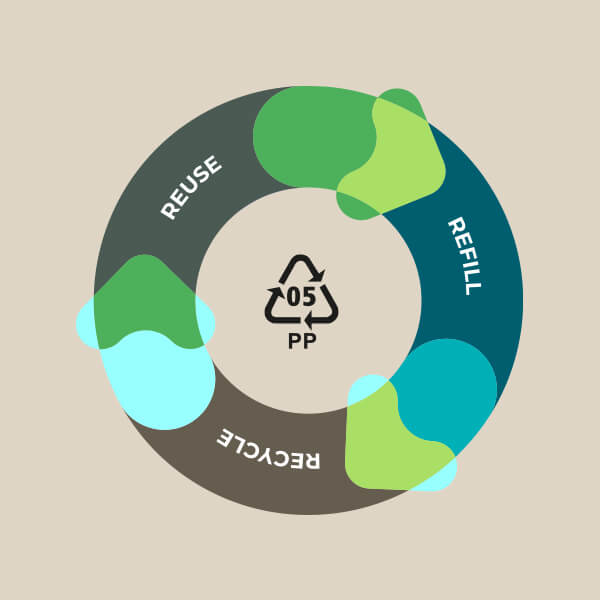Green Teams for a greener Science: How can research benefit from the work of sustainability networks?


Author:
Dr. Valeria Scagliotti
Sustainability Consultant for Life Sciences at SustainLABility
Key topics: Sustainability, Social networks, green teams, ecological footprint, carbon emissions
Category: Sustainability
Networks to make research even more sustainable.
Many of our daily activities heavily rely on the correct functioning of networks. If you think about it, we all use social networks, railway and public transport networks, radio, TV and phone networks, and of course – the most popular of all – internet.
But what is a network, exactly? Generally speaking, it can be described as a system formed by entities that interact with each other. At the same time, a network can also be defined as “a group of people or organisations that are closely connected and work with each other”. In many cases, the formation of such groups is driven by individuals who share a common interest and want to work towards common goals. The so-called ‘green teams’ are a perfect example, where members who are passionate about sustainability get together to tackle environmental issues and reduce the environmental footprint of specific activities. In the past few years, these sustainability networks have been increasingly popping up, both within and across academic institutions, as well as in private companies. But in what ways can these green teams contribute to make research more sustainable?
My name is Dr Valeria Scagliotti – I work as a sustainability consultant focused on research and life sciences – and here I will discuss the importance of sustainability networks in promoting a sustainable culture in research environments.
On average, the past few years have seen an exponential increase in environmental awareness, and topics such as carbon emissions and ecological footprint are now discussed on a daily basis. In many cases however, people have made a great effort to reduce their personal carbon footprint by embracing a more sustainable lifestyle, whilst feeling powerless or that it’s not their duty when it comes to the work environment. Even when people do want to take actions at their workplace, it can be challenging and overwhelming if they feel alone, especially when sustainability doesn’t appear to be an item on the company’s or institution’s agenda. A classic example in the research environment is the issue around plastic waste, with many scientists bothered by it and willing to do something about it (but not always knowing where to start from). If this sounds like you and your workplace has already a sustainability team in place, I strongly recommend that you join or at least reach out to the group. If that’s not the case, then one of the very first steps that should be taken is to start a green team yourself. What should it look like though?
Let’s use nature as an example. There is this idea that most species constantly compete for survival in the natural world. As a matter of fact, many natural systems rely more on collaboration rather than competition to function. Have you ever walked into a forest? In there, trees appear as a collection of individual entities, but the reality is that they’re all interconnected through fungal networks running underground, which they use to communicate and share resources (not surprisingly, scientists have been referring to this whole network system as the Wood Wide Web). The benefits of having such networks are numerous: for example, plants with more resources can support the growth of the ones with fewer, and environmental challenges can be quickly communicated and dealt with more efficiently by the entire tree community.
Similarly, sustainability networks in science should strive for collaboration, efficiency, and resilience. Systems such as these fungal networks or the more familiar World Wide Web continue to function even if a component stops working. Likewise, people in workplaces come and go, or sometimes their availability changes, so it’s important for the team to rely more on the strength of its members as a group and less on the capacity of single individuals. Also, creating a collaborative environment where tasks and responsibilities are shared avoid people from feeling overwhelmed, especially when their involvement in these sustainability groups is voluntary and on top of their daily activities.
If you’re lucky enough, someone from management has decided to appoint a ‘Green Officer’ and/or has given their approval for the establishment of a ‘Green Team’. If that’s not the case, do not despair: most sustainability networks in science have started as grassroots initiatives, and they have been equally successful.
If you’re wondering what to do, my advice is: start chatting to colleagues and peers about sustainability! And when you do it, make it personal. What is it that concerns you and what are your motivations to do something about it? What ideas have you got? You could also use news and articles about green issues and solutions as good conversation-starters. The key to having successful conversations is to avoid pointing fingers and to keep your message as positive as possible. People might have different priorities at first, but that doesn’t mean that you cannot find some common ground.
And remember: there are many individuals out there who do care about the environment and recognise the importance of embedding sustainability into their work practices, so keep looking.
By now, you have hopefully found other people who are passionate about sustainability. The next step is to get together and share your thoughts and ideas. Of course, the more people there are, the merrier. However, the number of team members is not so crucial, as small groups can still make a positive change and have a big impact. To me, having a diversified group is the real win.
A good example is the STARLAB Green Team, which is formed by employers from all the countries in which Starlab is based, and who hold different roles within the company, from marketing and sales to warehouse management and administration. This is particularly important for two reasons: first, not every unit has the same sustainability challenges; second, the involvement of employees from different departments is key to ensure that workstreams become greener in all their aspects.
In academia, things might be a bit different, but the importance of having a diversified group stays. From students to senior scientists, from technicians to lab managers, from researchers working at the bench to the ones mostly doing computational analysis, everyone needs to be part of the sustainability conversation!
No matter if they’re formed by members from the same company or institute, or from institutions across a city, country or even a continent, all the sustainability groups in science & research have one thing in common: passion is their main driver! And passion-driven groups with a common goal – to make research greener – can accomplish a lot by interacting with each other.
These interactions can take many forms, from project collaborations and resource-sharing to organisation of events and awareness-building campaigns. Also, let’s not forget the importance of engaging with suppliers and manufacturers, especially since the supply chain is one of the main contributors to the carbon emissions associated with research activities. As a matter of fact, green teams representing lab users have a stronger voice than individual researchers alone and can really influence green procurement practices by communicating their needs as customers, giving feedback, and by asking manufacturers for clear sustainability standards and greener products.
Finally, green teams can play an instrumental role when it comes to shaping sustainability policies of institutions. Specifically, it appears that the best achievements are accomplished when a bottom-up approach (green teams and sustainability groups proposing measures and demanding actions) is combined with top-down measures, which can provide the resources needed to meet the required environmental goals.
The power of sustainability networks to drive collective actions can really accelerate the transition towards greener research practices. To all the green teams out there: keep going and remember to celebrate and share your successes, initiatives, ideas, and accomplishments. We can all learn from each other!
I’m looking forward to the day when sustainability groups will be part of every single research institution and business company.
Tips and more.


The Starlab Green Mission.
Discover Starlab's tips, products and services on the subject of sustainability. Get to know our Green Team. We look forward to a joint #EcolutionMovement.
Podcast: How to become a sustainable company.
CEO Klaus Ambos and guest Dr. Kerstin Hermuth-Kleinschmidt, a Sustainability Consultant, delve into the importance of sustainability in science and offer initial steps for companies.






